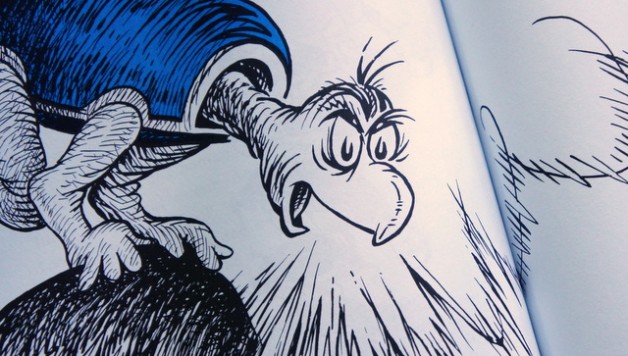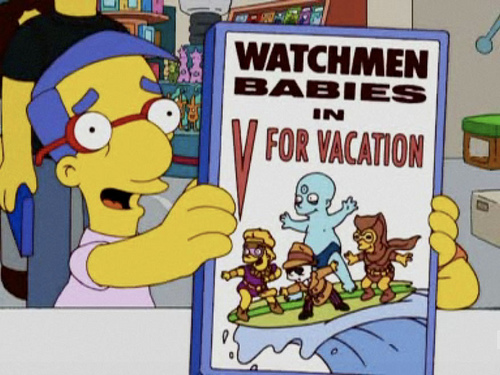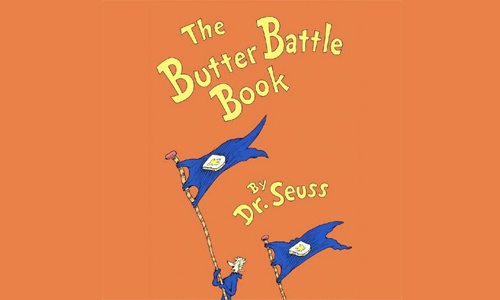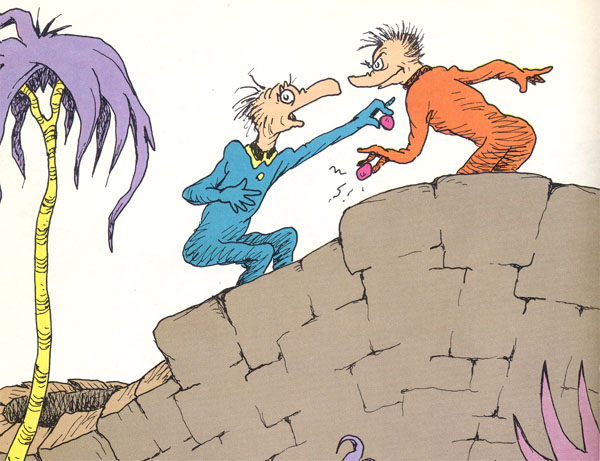Here’s the deal:
Dr. Seuss was a pinko commie and I love him for it. Growing up, I, like most of us, came to Seuss’ works through books like The Cat in the Hat, One Fish, Two Fish, Red Fish, Blue Fish, A People House, and How the Grinch Stole Christmas. But it was only later, as I read certain books I had never come across before, and read up on Seuss’ intentions, did the man go from being a great illustrator and whimsical storyteller to being a surprisingly insightful artist.
For instance, many of his books operate not only as childhood flights of fancy but also as social and political allegories. Some of these are more obvious than others, but some aren’t so apparent at first glance. The Lorax is clearly a pro-environmentalist work and The Sneetches is about the dangers of discrimination (specifically racial), but fewer of us may know that Horton Hears a Who! is about post-war Japanese identity (I know, right?) and Yertle the Turtle is a children’s book about Hitler.

Seuss was very interested in world affairs and saw the value of instructing children about the world through his cartoony lens. He also referred to himself as “subversive as hell.” With that knowledge in mind, perhaps the list above makes a little more sense in context.
But what if I were to tell you that Dr. Seuss wrote a children’s book about nuclear war?
The Butter Battle Book, often cited as one of the most banned children’s books, was published in 1984 while the Cold War still raged on. If you haven’t read it, there’s a good chance you’ve seen it in a bookstore or library, and its bright orange and blue cover makes it look pleasant and innocuous enough. What lies within, though, is basically Watchmen: For Beginning Readers.

The book focuses on two communities, the Yooks and the Zooks, who live next to each other, separated by a long wall (sound familiar?). One group eats bread with the butter side up (like all honest, God-fearing Americans) and the other eats bread with the butter side down (like insane people).
Joking aside, that minor and insignificant difference is what leads to hatred between the two groups, which in turn leads to an escalating weaponization of each culture (all the weapons being fittingly whimsical and Seussian, of course) that becomes an arms race.
This arms race culminates in each side creating the cartoon equivalent of nuclear bombs, with each side ready to obliterate the other at a moment’s notice, leading to mutually assured destruction.
Though the threat of nuclear war was a very real one in 1984, it seems many who objected to the book did so not because Seuss was exposing their children to a sensitive and terrifying issue, but because Seuss had the nerve to say the Americans and the Soviets were equal (and squabbling over nothingness). If that isn’t a case of not being able to see the forest for the trees, I don’t know what is.
Controversy or no, the book was eventually made into a television special by famed adult animator Ralph Bakshi, airing in November 1989, just days after the fall of the Berlin Wall. Not only was the special timely, it was expertly executed, being incredibly faithful to Seuss’ work, and just as chilling. Give both the book and special a go.
But seriously, Green Eggs and Ham is about Vietnam-era hunger strikes.


